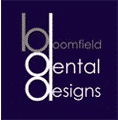General and cosmetic dentistry are both necessary if you want a winning smile and healthy oral hygiene. But if you’re not familiar with the terminology, it can be easy to group them together when there are quite a few differences.
In the following article, we’ll be defining these terms and discussing what some of those differences are and why you need to know about them. So open wide, it’s time for your checkup!
What is General Dentistry?
The American Dental Association defines general dentistry as the “evaluation, diagnosis, prevention and/or treatment” of diseases, disorders, and conditions that affect oral health.
Everyone needs to know their oral health report card. And general dentistry sheds light on this through a variety of techniques, such as:
- Exams, X-rays and teeth cleanings
- Fillings
- Extractions
- Root canals
Cosmetic dentistry helps to address dental issues as well. But it goes a little further, and we’ll discuss that in the next section.
What Do We Mean by Cosmetic Dentistry?
Merriam-Webster defines the word cosmetic as “visually appealing.” Combine that with dentistry, and it becomes clear.
A cosmetic dental clinic practices dentistry that ensures a gorgeous and healthy smile. It can accomplish this through several methods.
1. Composite Bonding
The CB procedure involves a resin that can be applied to an existing tooth. This can serve a few purposes:
- Patching broken teeth
- Boosting tooth color
- Filling cavities or covering discoloration
That’s a short view of it. You can read more about how Bloomfield handles the procedure.
2. Veneers
A dental veneer is usually made from either resin or porcelain. Porcelain veneers are sturdier, and they tend to avoid discoloration and maintain stability better than their cheaper counterparts.
Veneers are great options if you have staining. They’re also effective for chipped, crooked, or misshapen teeth. And they can help keep out food and plaque if your teeth have more space between them.
This is particularly important. That’s because four-in-five adults suffer from periodontal disease as a result of plaque buildup.
3. Teeth Whitening
Discolored teeth aren’t necessarily unhealthy. But they can certainly make you think twice about smiling. And living with discoloration is wholly unnecessary, especially with whitening such an affordable and effective process.
There are two popular teeth whitening methods. Read more about each of them.
4. Inlays and Onlays
Inlays and Onlays are effective for when you have small portions of the tooth with spacing or cavities that run the risk of collecting plaque and tartar deposits. The Inlay fits in the back of a small point on the individual tooth.
The Onlay covers more than one point. Both procedures involve external manufacturing of the piece which is then cemented to the affected areas.
5. Dental Implants
An alternative to dentures, these “artificial” teeth are indistinguishable from a tooth in appearance. They’re also fused to the jaw, making them extremely sturdy, comfortable, and permanent. Here’s a full rundown of the advantages, disadvantages, and types.
General and Cosmetic Dentistry Keep Your Mouth Happy
Through both general and cosmetic dentistry, you can guarantee the long-term health and comfort of your teeth. And Bloomfield Dental Designs can take care of both. Contact us today to see how we can help!
